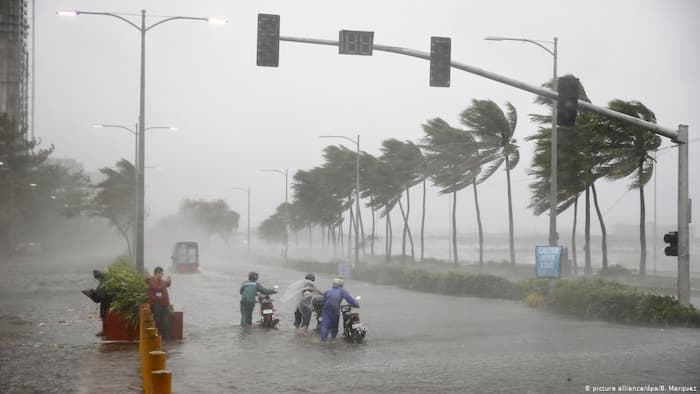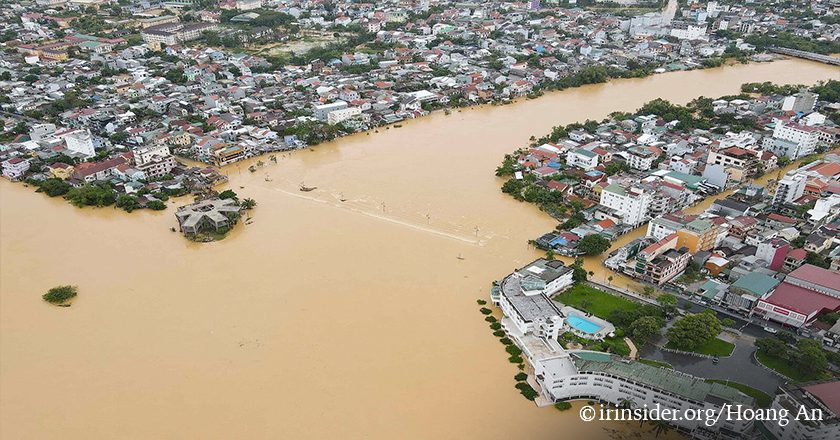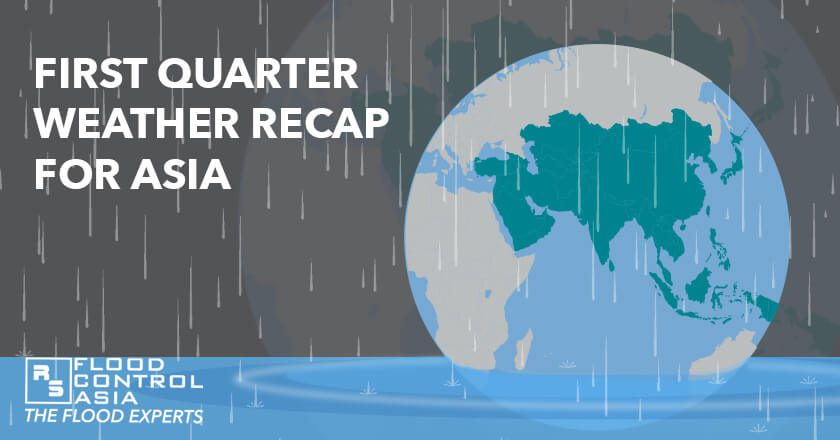Flooding in Southeast Asia: Is it Hopeless?
October 15, 2022 | Created by: Andreas Klippe | Comments

The Southeast Asian region has been experiencing an alarming increase in the frequency and strength of typhoons in recent years.
Typhoon Noru, also referred to as Super Typhoon Karding in the Philippines, was a powerful tropical cyclone that struck Vietnam, Cambodia, Thailand, and the Philippines, where it severely damaged the country’s agriculture. Noru, the eighth typhoon, third super typhoon storm of the 2022 Pacific typhoon season, developed over the Philippine Sea.
Philippines
At least 304 million pesos (US$6.18 million) in infrastructure damages and 3.08 billion pesos (US$62.5 million) in agricultural damages were recorded by the Philippines’ National Disaster Risk Reduction and Management Council (NDRRMC), for a total of 3.38 billion pesos (US$68.7 million). Following the typhoon, 40 individuals have been reported killed, while 5 more are still missing.
Vietnam
In Ngh An, more than 300 schools have been closed as a result of flash floods or intense rain. In total, Noru was to blame for nine fatalities. Flooding brought on by Noru in the province of Ngh An resulted in significant losses totaling around 1 trillion VND (US$41.8 million). After touching down, it became a Tropical Storm. Property losses attributed to Noru and associated flooding were 1.102 trillion VND (US$45.8 million) in the province of Tha Thiên Hu. Quang Ngi province was also impacted by Noru, with losses there totaling 500 billion VND ($20.7 million).
Cambodia
Civil protection reports that as of September 27, 16 persons in Cambodia had perished in flooding near the Mekong River. In the provinces of Banteay Meanchey and Preah Vihear, 30 families and 60 families in Mongkul Borei, respectively, have been evacuated.
Thailand
Strong flooding in Surin was spurred on by Noru’s heavy rains. East of Bangkok, in the provinces, there was also a lot of rain. 3,121 homes were reportedly destroyed, according to the Department of Disaster Prevention and Mitigation (DDPM). Two people were hurt, and at least three people died. Near western Thailand, Noru ceased to exist.

Other significant Tropical Storms in the South East Asian Region that caused massive damages in infrastructure, agricultire, and casualties.
Typhoon Chaba – When Chaba made landfall in the Chinese province of Guangdong in the southwest, an offshore crane vessel split in half and sank, killing at least 12 people. Leaving a total damage of $464 million USD.
Tropical Storm Mulan – Six persons died as a result of flash floods brought on by the storm’s heavy rainfall in Vietnam. heavy rains of 20 to 50 mm fell in the northern part of the nation (0.79 to 1.97 in). In addition, the storm’s effects led to the death of roughly 30,000 lobsters, resulting in projected agricultural losses of US$106,850.
Severe Tropical Storm Ma-on – Four bridges in Northern Luzon, Philippines, were impassable due to the storm’s high rains causing rivers to overflow. Farms for rice and corn covering 10,608 hectares were devastated. 39 barangays in Pampanga were flooded. Harm to infrastructure was projected to be worth $8.88 million, whereas damage to agriculture was estimated to be worth $253,827.
Severe Tropical Storm Nalgae – A day before the storm’s impact, flooding and landslides in Mindanao claimed the lives of at least 45 people. After it left, it had claimed 164 lives, with 28 still unaccounted for. A number of Philippine-based airlines announced the cancellation of 124 local and international flights as a safety measure against the effects of the powerful tropical storm.
The Hong Kong Observatory issued its third-highest strong wind warning (Signal No. 8) on November 3 as Tropical Storm Nalgae approached Hong Kong. The warning signal was raised to this level for the first time in 50 years.
What can we learn?
These storms have caused major destruction and loss of life, leaving communities struggling to recover. The economic impact of these floods is significant, with businesses and infrastructure being destroyed. The cost of rebuilding and recovery is staggering. It is clear that something needs to be done to mitigate the effects of these storms.
Climate change is a reality that cannot be denied. Rising temperatures and sea levels are exacerbating the severity of these storms. The increasing frequency and intensity of typhoons in the Southeast Asian region is a clear indication of this. The science is clear, and the evidence is overwhelming. We must take action now to address the causes of climate change and to prepare for the consequences that we are already experiencing.
Areas that have traditionally not been prone to flooding are now experiencing severe flooding, and areas that have previously been flooded are experiencing even deeper flood levels. This is a clear indication that the situation is getting worse. Floods are a natural part of the hydrological cycle, but climate change is making them more frequent and more severe. These floods are not just an inconvenience, they are a real threat to human lives and property.
Is it hopless for South East Asia?
The government has a responsibility to protect its citizens from the effects of floods. Building flood dikes and improving canals are important steps in mitigating the effects of flooding. These measures will help to reduce the severity of floods and protect communities from the worst effects of these storms. However, government projects can take a long time to implement, and more lives are at risk in the meantime. This is why individuals must take action to protect themselves by installing flood barriers in their homes and businesses. Flood barriers are the key to protecting against floods.

Flood barriers are not just for businesses and homes in flood-prone areas. Floods can happen anywhere, and they can happen unexpectedly. Having a flood barrier in place can give you peace of mind and protect your property from the worst effects of a flood. There are many different types of flood barriers available, and a flood expert can help you choose the right one for your specific needs.
To ensure that you are adequately protected against floods, it is important to consult with a flood expert who can assess your specific needs and recommend the appropriate measures to protect your home or business. Don’t wait, call a flood expert now. With their help, you can make sure that you are prepared for the next flood, and that you can protect your property and your loved ones from the worst effects of these storms.
In conclusion, the Southeast Asian region is experiencing an alarming increase in the frequency and strength of typhoons, and the economic and social impact is significant. Climate change is inevitable and undeniable, and it’s making the situation worse. Governments must take action to protect citizens by building flood dikes and improving canals. However, individual actions are also crucial, such as installing flood barriers in their homes and business to protect themselves. Flood barrier is the key. The best way to protect your property and your loved ones is to consult with a flood expert, so don’t hesitate, call one now.




